RARE 1942 Dated Original P‑51 Mustang Contractor Block Blueprint North American Aviation Inc.



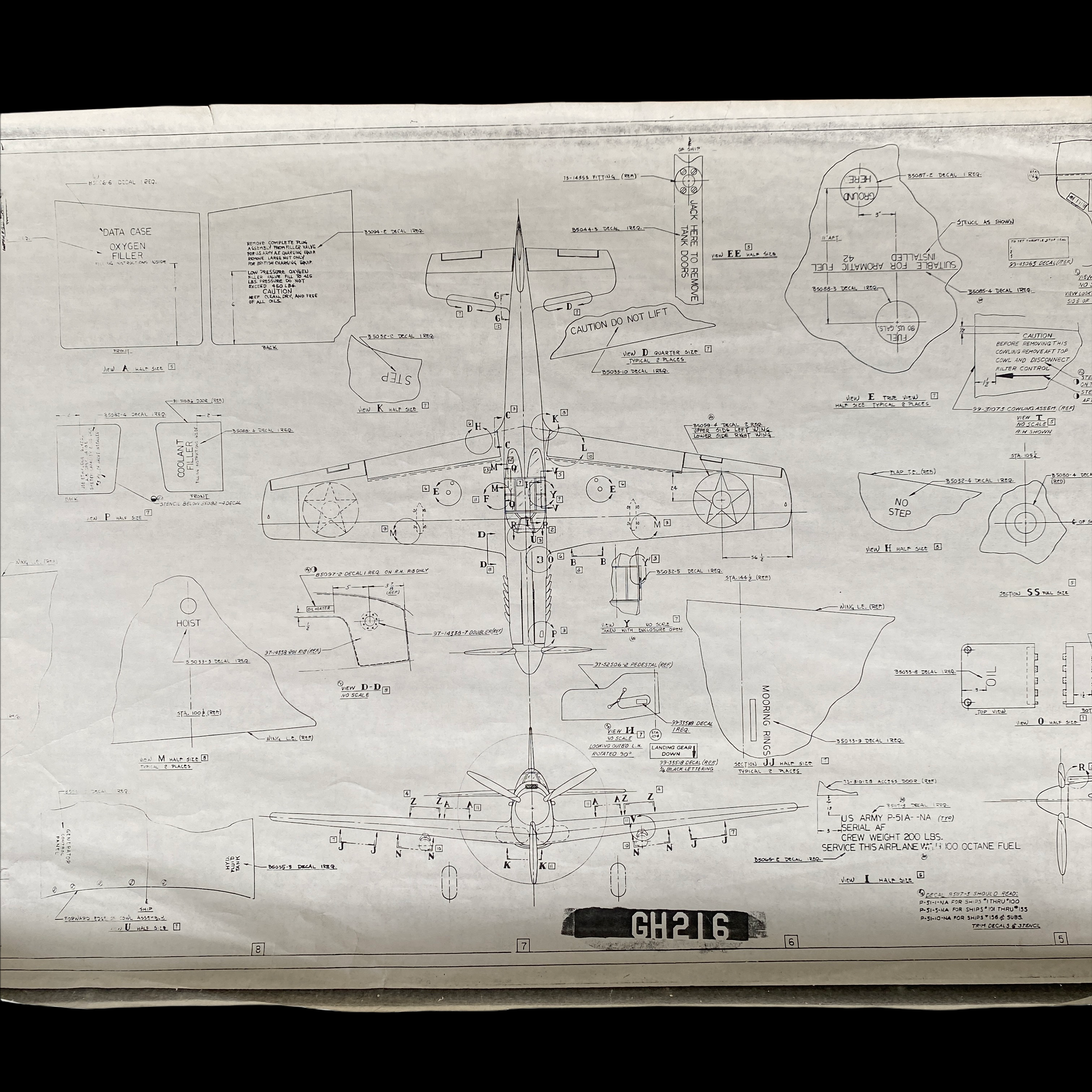
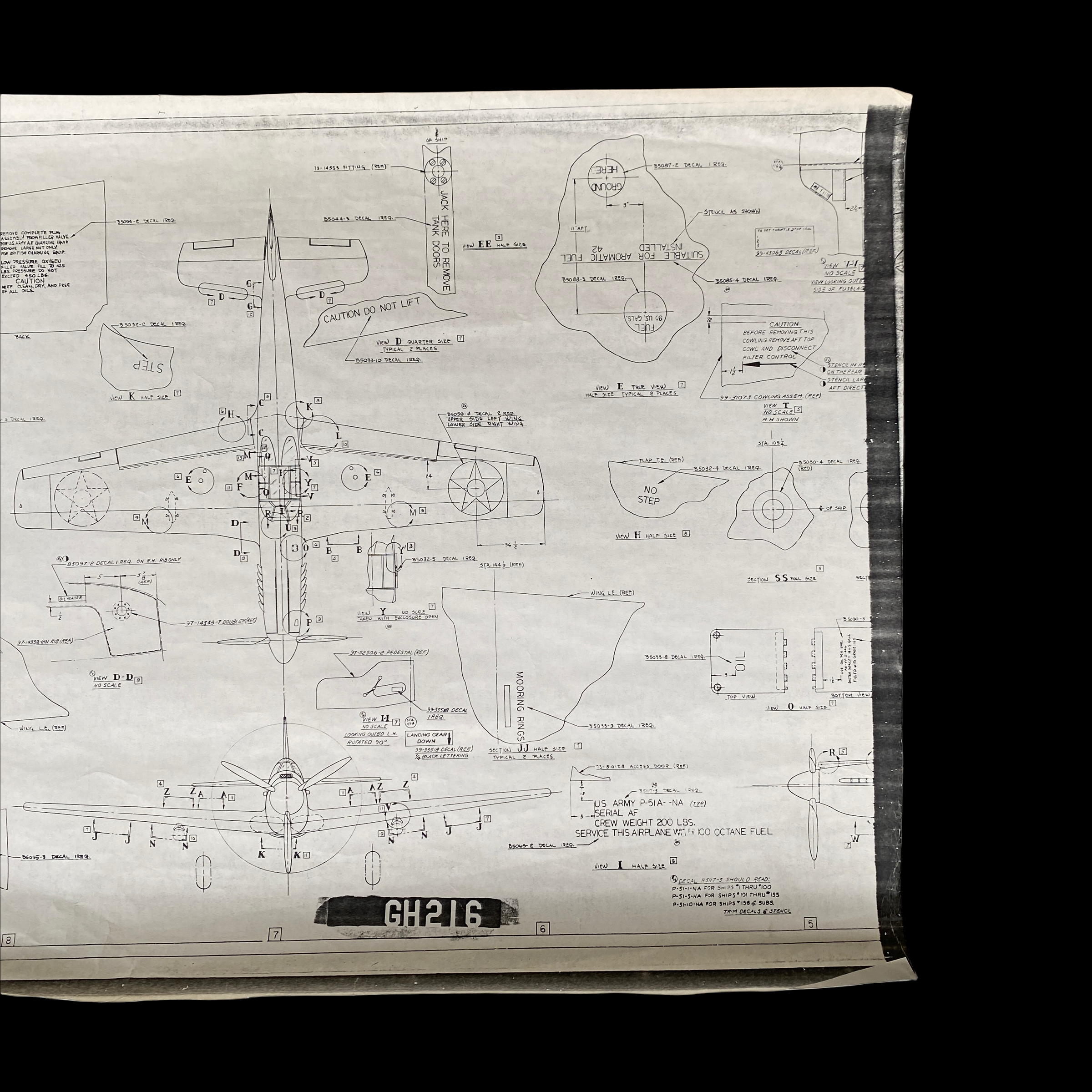

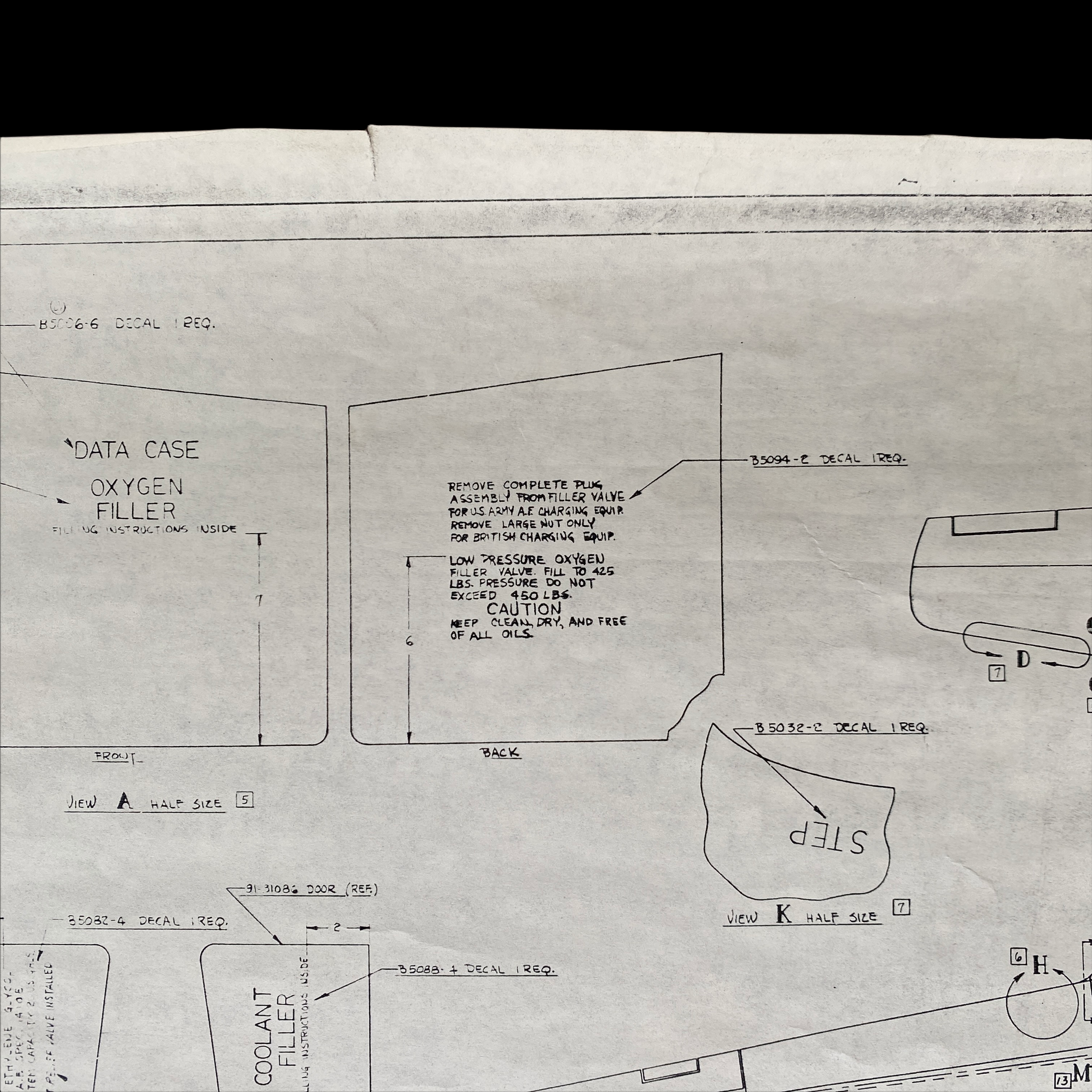
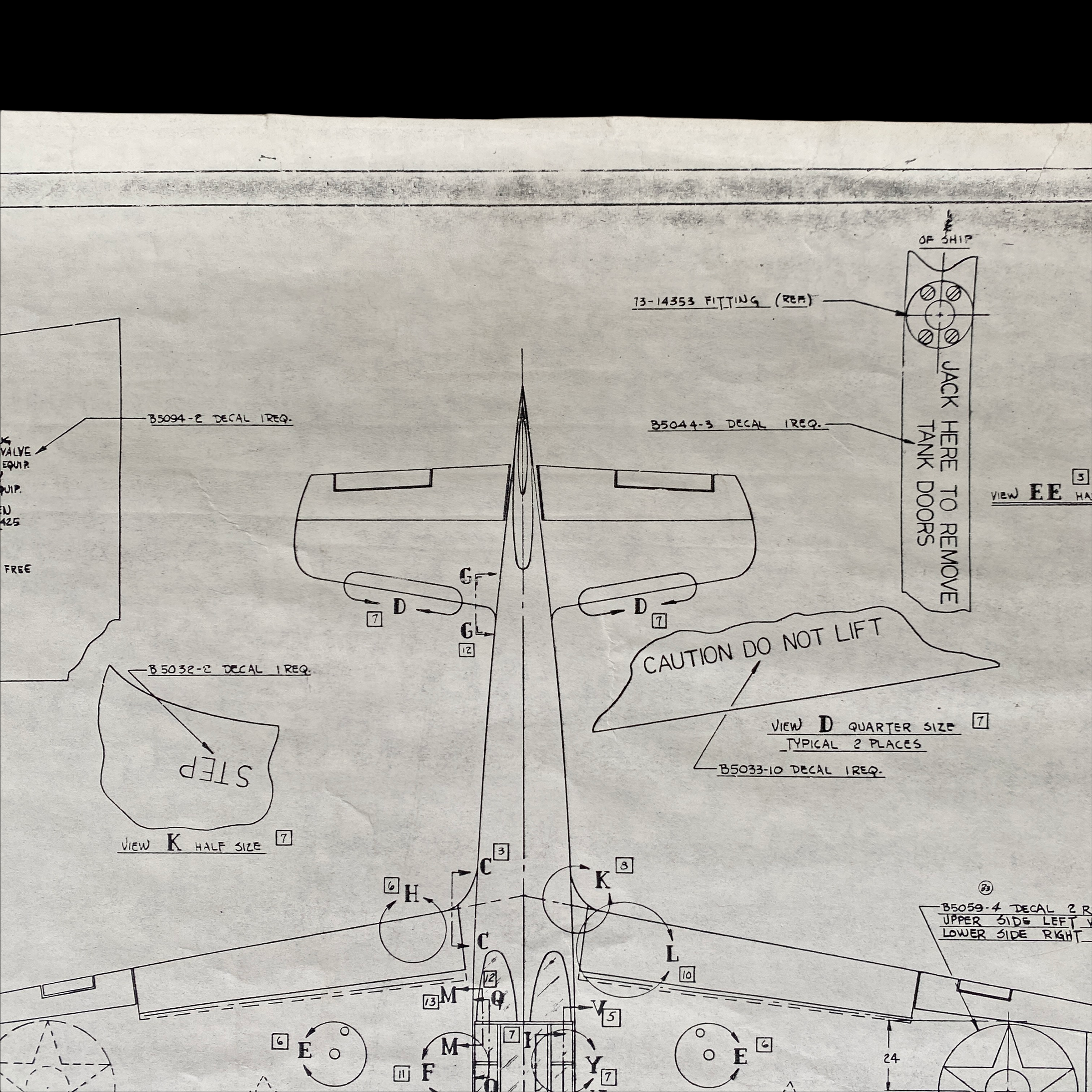




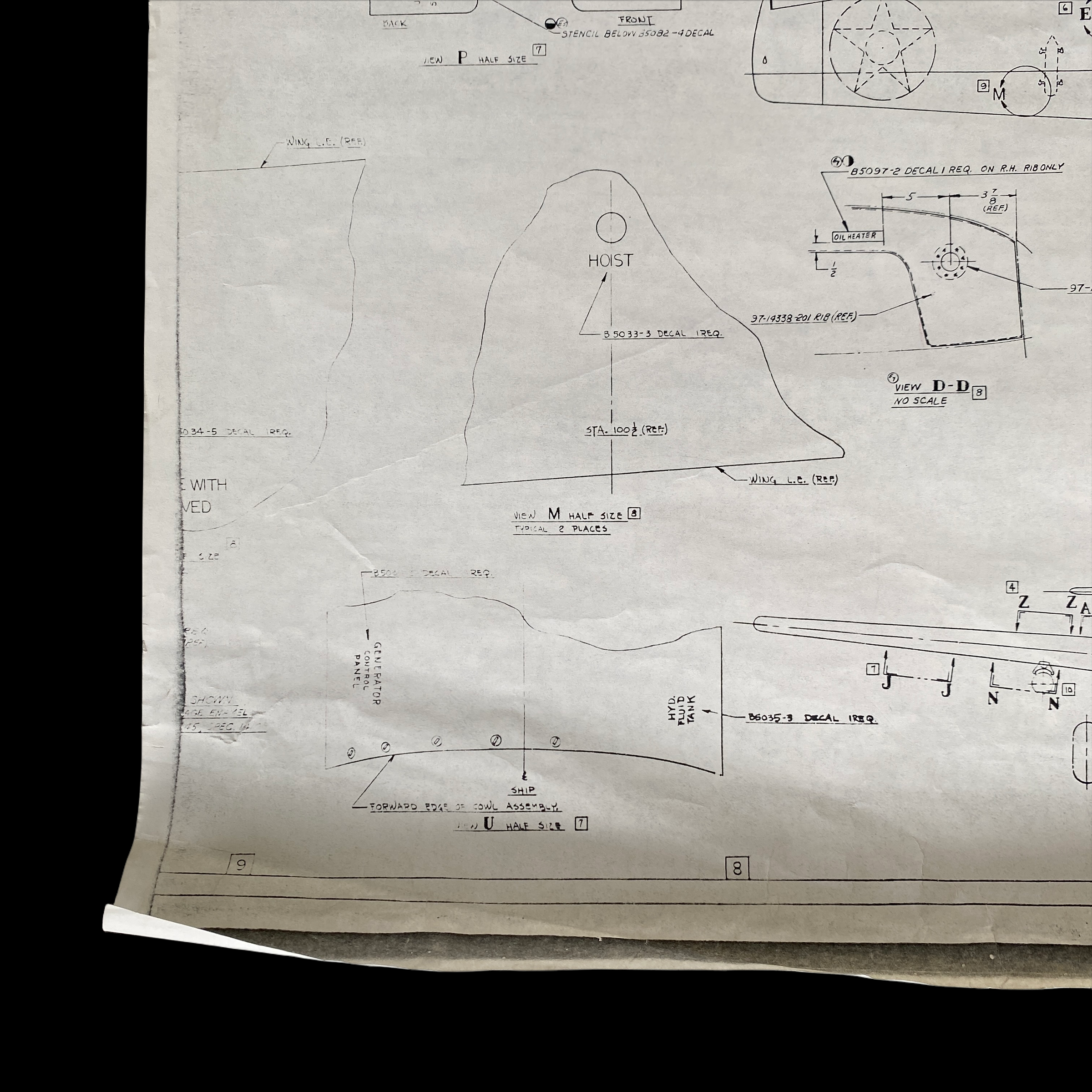
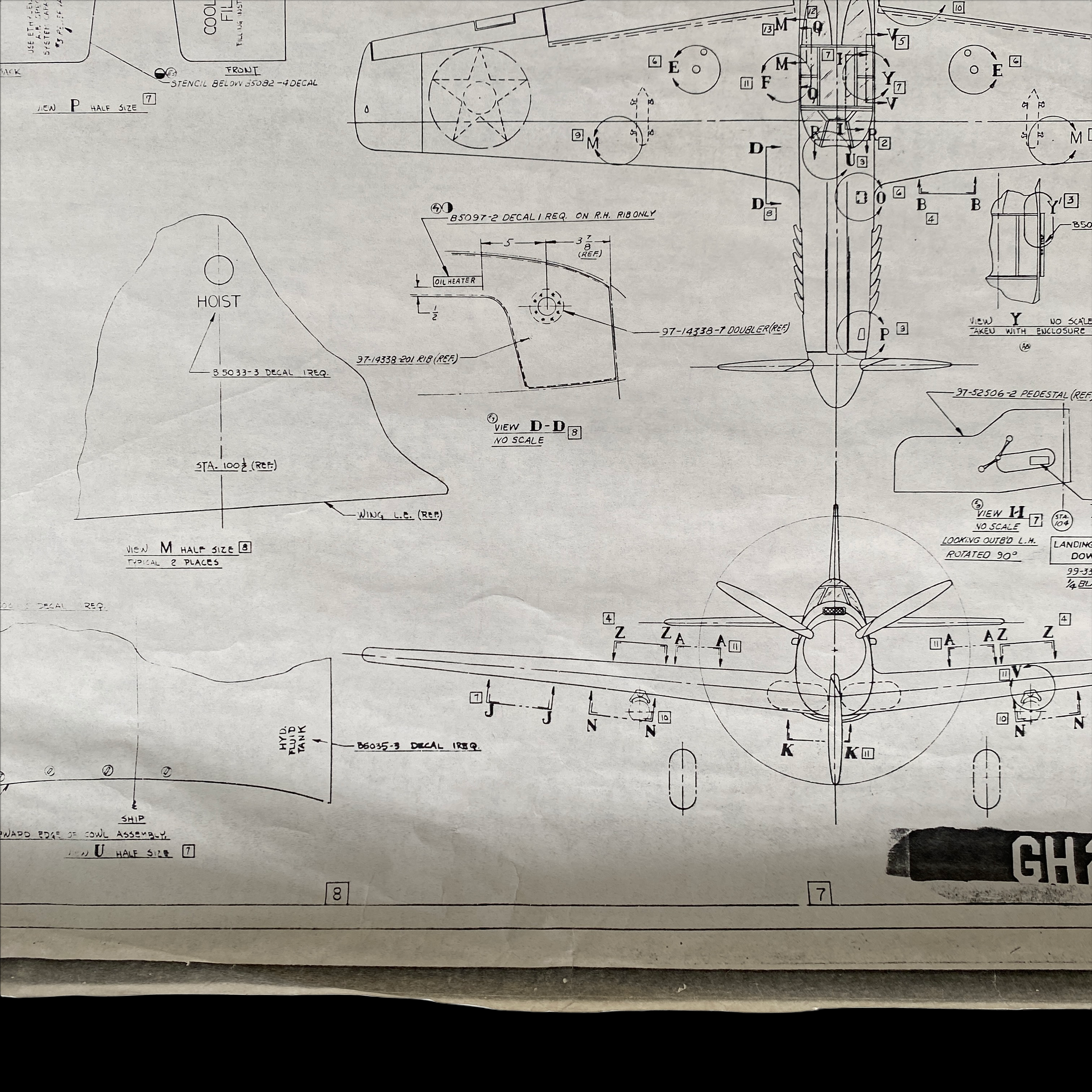
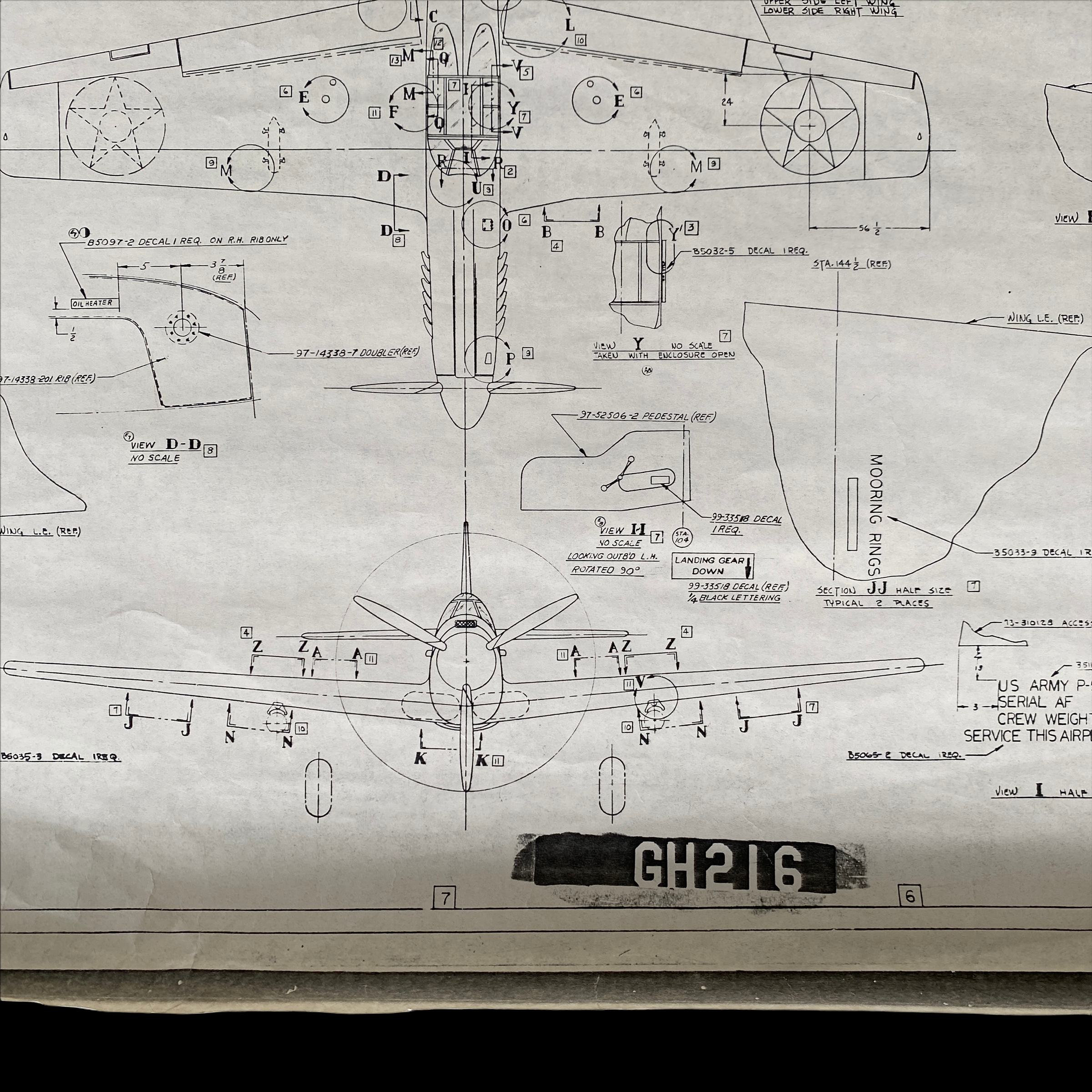
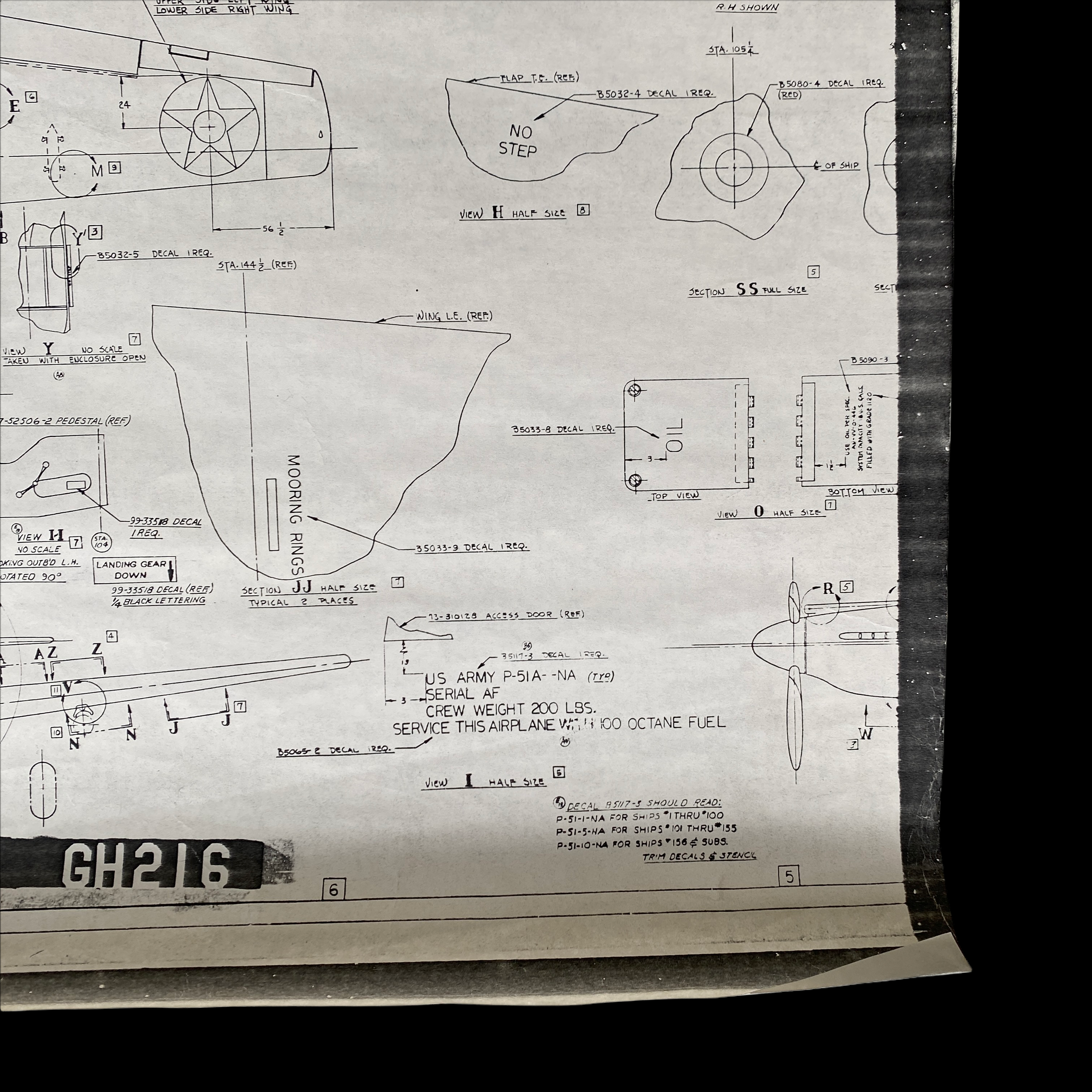
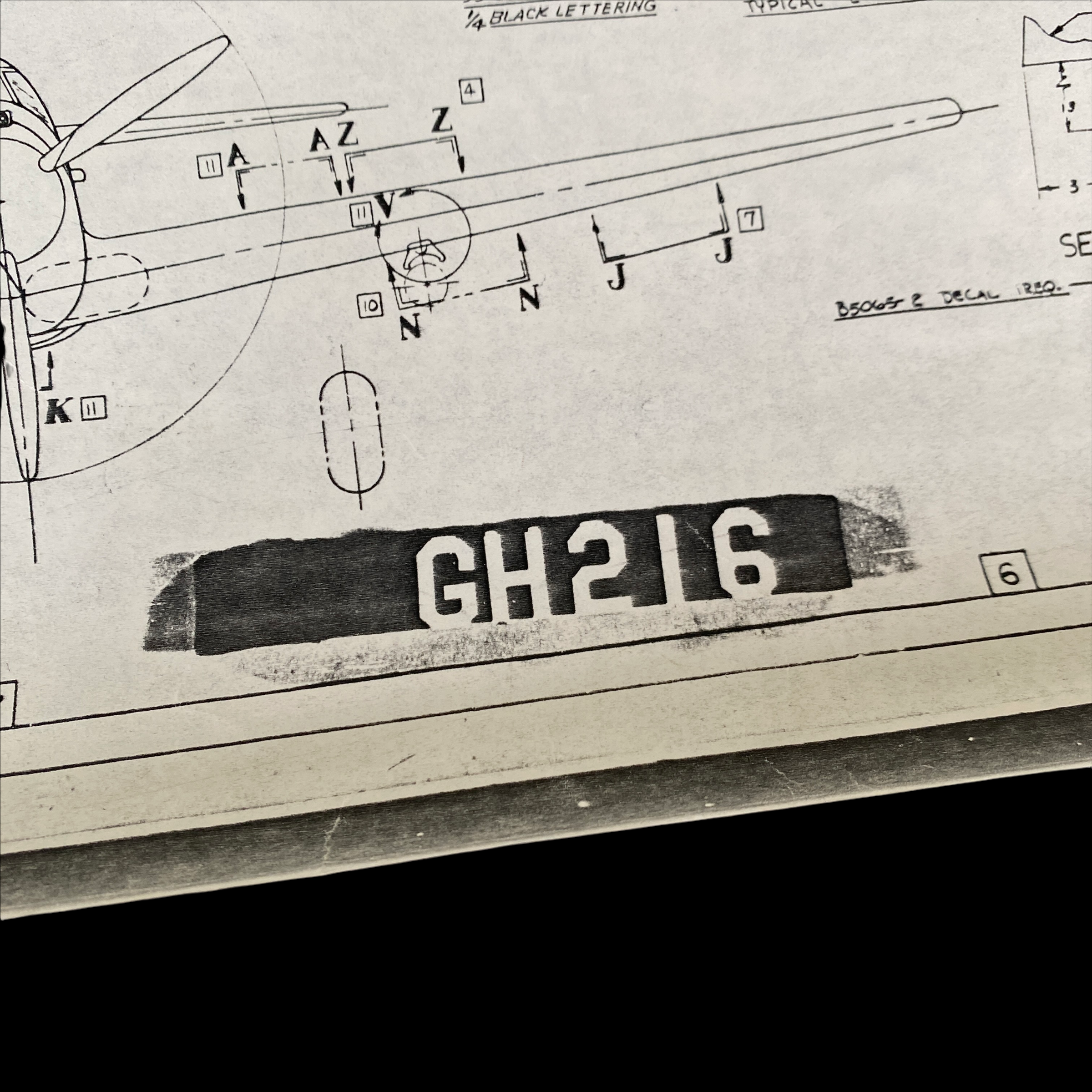

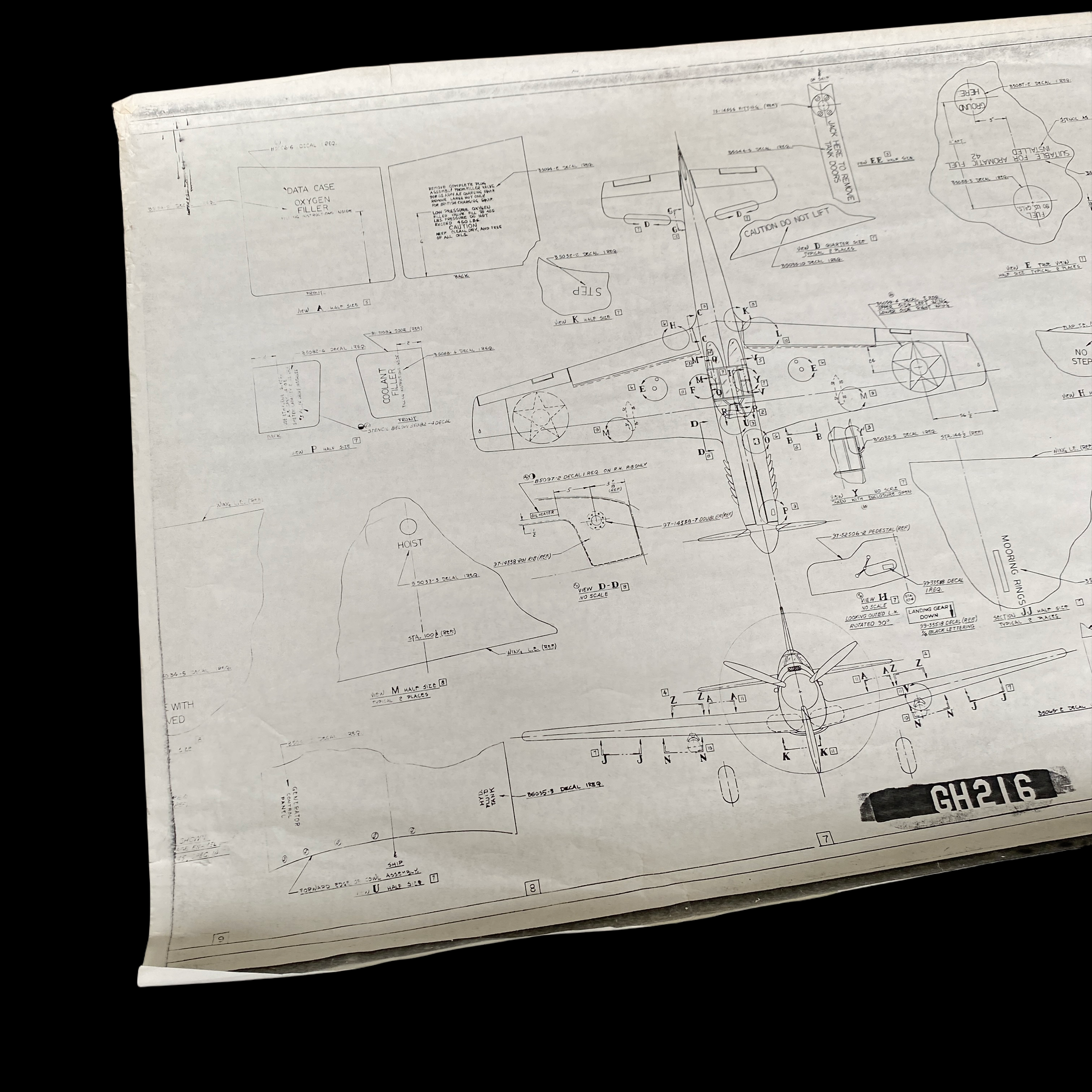
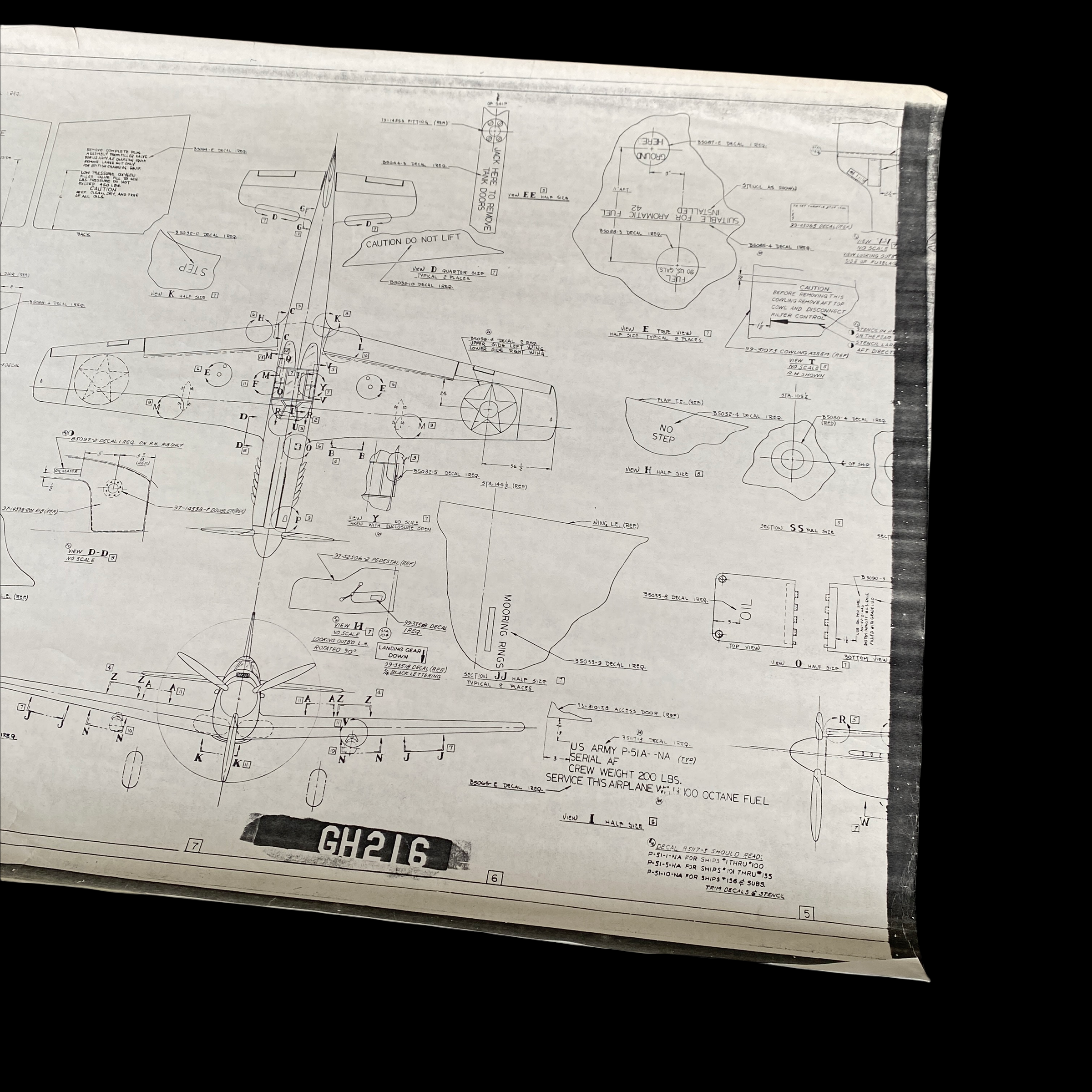
RARE 1942 Dated Original P‑51 Mustang Contractor Block Blueprint North American Aviation Inc.
EXCLUSIVE MUSEUM ARTIFACT.
This incredibly rare 1942 dated original WWII P-51 contractor design blueprint of the infamous North American P‑51A Mustang comes directly from the North American Aviation Inc. in Inglewood California.
This blueprint (#GH216) was used to produce some of the U.S. Army’s large order of 1,200 P-51 Mustangs in August of 1942. This order was for no ground attack here, no dive brakes, just pure fighter. This was the best fighter the U.S. had below 22,000 feet.
Built at Inglewood, California 50 of these P-51A-NA were also lend-leased to the RAF as the "Mustang II". These P-51 Mustangs build using this blueprint saw service as the 8th Air Force started operations from Britain in August 1942. On 10 May 1942, Mustangs first flew over France, near Berck-sur-Mer. On 27 July 1942, 16 RAF Mustangs undertook their first long-range reconnaissance mission over Germany. During the amphibious Dieppe Raid on the French coast (19 August 1942), four British and Canadian Mustang squadrons, including 26 Squadron, saw action covering the assault on the ground.
North American Aviation designed and built the P-51 in an unbelievable 117 days. An exceptional long-range bomber escort and a fast and furious dogfighter, the P-51 qualified 281 allied pilots as Aces, second only to the Hellcat with 307 Aces.
These contractor block blueprints were drafted from the larger master blueprint. The contractor blocks were the same scale size but were “cut” into smaller sections and were meant to be grabbed when working on a specific section of the aircraft. Unrolling a huge 20ft+ master blueprint was not manageable so smaller sectioned blueprints were specially numbered and necessary based on the scale, rate, and quantity these P-51s were being produced.
From mid-1944 the P-51 was most famously used by the USAAF's Eighth Air Force to escort bombers in raids over Germany, while the RAF's Second Tactical Air Force and the USAAF's Ninth Air Force used the Merlin-powered Mustangs as fighter-bombers, roles in which the Mustang helped ensure Allied air superiority in 1944. The P-51D was also used by Allied air forces in the North African, Mediterranean, Italian, and Pacific theaters. During World War II, Mustang pilots claimed to have destroyed 4,950 enemy aircraft. The P-51 was a relative latecomer to the Pacific Theater, due largely to the need for the aircraft in Europe, although the P-38's twin-engined design was considered a safety advantage for long, over-water flights. As the war in Europe wound down, the P-51 became more common. With the capture of Iwo Jima, USAAF P-51 Mustang fighters of the VII Fighter Command were stationed on that island starting in March 1945, being initially tasked with escorting Boeing B-29 Superfortress missions against the Japanese homeland.